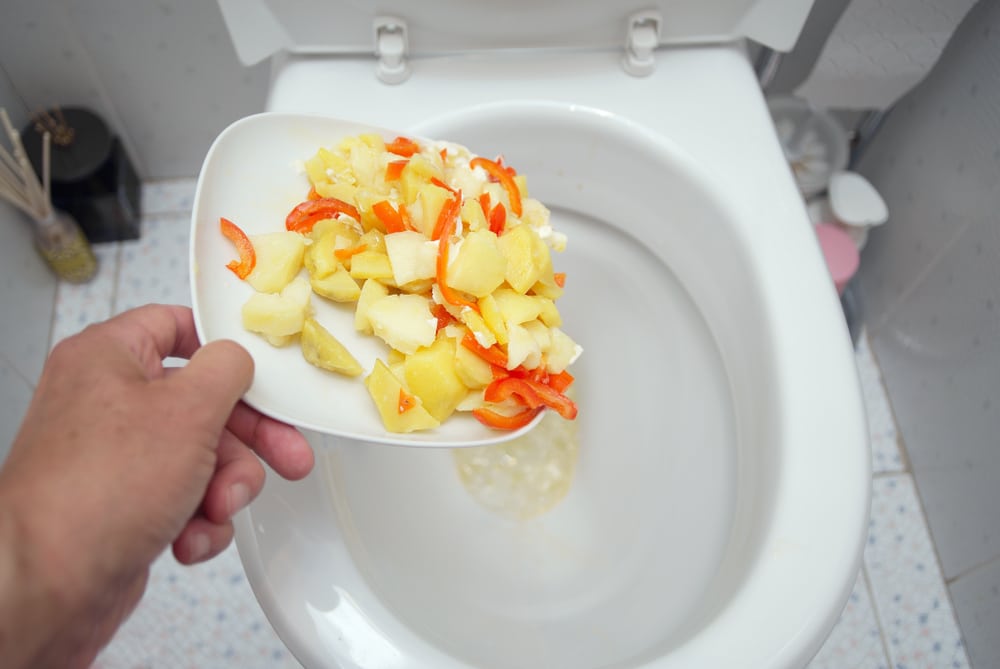What're your thoughts regarding Flushing Food Down the Toilet??

Intro
Many individuals are frequently faced with the dilemma of what to do with food waste, especially when it involves leftovers or scraps. One typical concern that arises is whether it's fine to purge food down the toilet. In this write-up, we'll explore the reasons that individuals could think about purging food, the effects of doing so, and alternate techniques for proper disposal.
Reasons that individuals might take into consideration flushing food
Absence of awareness
Some individuals may not understand the possible injury caused by purging food down the toilet. They may mistakenly think that it's a harmless technique.
Comfort
Flushing food down the commode might appear like a fast and simple service to dealing with unwanted scraps, especially when there's no nearby trash can offered.
Laziness
Sometimes, individuals might merely select to flush food out of sheer idleness, without thinking about the effects of their activities.
Consequences of flushing food down the commode
Ecological impact
Food waste that winds up in waterways can contribute to pollution and damage water ecosystems. In addition, the water made use of to purge food can stress water resources.
Plumbing problems
Purging food can result in clogged up pipes and drains pipes, creating costly pipes fixings and inconveniences.
Kinds of food that must not be purged
Fibrous foods
Foods with fibrous textures such as celery or corn husks can get entangled in pipelines and cause obstructions.
Starchy foods
Starchy foods like pasta and rice can soak up water and swell, bring about obstructions in pipelines.
Oils and fats
Greasy foods like bacon or cooking oils need to never be purged down the commode as they can strengthen and trigger obstructions.
Proper disposal methods for food waste
Making use of a garbage disposal
For homes furnished with garbage disposals, food scraps can be ground up and purged with the plumbing system. Nevertheless, not all foods appropriate for disposal in this manner.
Recycling
Particular food packaging materials can be reused, reducing waste and reducing ecological effect.
Composting
Composting is a green method to throw away food waste. Organic materials can be composted and utilized to enhance soil for gardening.
The importance of correct waste management
Reducing ecological damage
Appropriate waste management practices, such as composting and recycling, aid lessen pollution and protect natural resources for future generations.
Securing plumbing systems
By staying clear of the technique of flushing food down the toilet, house owners can stop pricey plumbing repair work and preserve the honesty of their pipes systems.
Final thought
To conclude, while it may be appealing to flush food down the bathroom for convenience, it is essential to recognize the prospective repercussions of this action. By embracing appropriate waste monitoring methods and disposing of food waste properly, people can contribute to healthier plumbing systems and a cleaner environment for all.
FLUSH FOOD DOWN THE TOILET?
FLUSHING FOOD CAN CAUSE BLOCKED DRAINS IN YOUR HOME
All of the plumbing fixtures in your home are connected to the same sewer pipe outside of your home. This outdoor sewer pipe is responsible for transporting all the wastewater from your home to the Council sewer mains. Even small pieces of food that go down the kitchen sink can cause problems for your sewer. It should therefore be obvious that flushing larger bits of food, such as meat, risks a clog in either the toilet itself or the sewer pipes. Flushing greasy food is even more problematic because oil coagulates when it cools, coating the interior lining of your pipes.
THE TOILET IS NOT A BIN
Food isn’t the only thing that people shouldn’t be flushing down the toilet. People use the toilet to dispose of all kinds of things such as tampons, makeup wipes, dental floss, kitty litter and even underwear. Water goes to great lengths to educate residents about the high costs and stress placed on wastewater treatment systems simply from people flushing the wrong stuff down the toilet. It costs taxpayers millions of dollars each year, and homeowners thousands in blocked drain repairs.
FLUSHING FOOD IS A WASTE OF WATER
Flushing food is a waste of our most precious resource - water. In June this year Level 1 water restrictions were introduced to protect water supply from drought conditions. Much of New South Wales continues to be affected by prolonged drought with recent figures revealing up to 97 per cent of the state remains in drought. Depending on whether you have a single or dual flush toilet, every single flush uses between five and 11 litres of water. In the current climate this is a huge amount of water to be wasting on flushing food that should be placed in the bin (or better yet, the compost).
https://www.jabplumbingsolutions.com.au/blog/can-you-flush-food-down-the-toilet

Do you enjoy reading up on Is it safe to flush food (especially rice) down the toilet?? Leave a comment down the page. We will be pleased to know your insights about this blog posting. We hope that you visit us again in the future. Appreciated our piece of writing? Please quickly share it. Help somebody else find it. We love reading our article about What Can Happen If You Flush Food Down the Toilet?.
Schedule Services